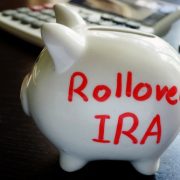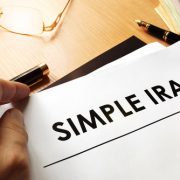What Self-Directed IRA Options are Available for Small Businesses?
When people think about Self-Directed IRAs, they often tend to think of them as distant things. Something that a small business owner with 90 employees might use, sure, but not necessarily something they would do on their own. But you might be surprised. Many Self-Directed IRA options are available for the self-employed, and for business owners who have very small businesses, even sole proprietorships. But what Self-Directed IRA options are available for these businesses? Let us take a closer look.
The Self-Directed SEP IRA
The Self-Directed SEP IRA, known as the Simplified Employee Pension IRA, is a powerful retirement plan because it allows for substantial contribution limits that are closer to a 401(k), depending on circumstances, than a Traditional IRA. Of course, this is a blanket statement and may not reflect your individual position. However, with a Self-Directed SEP IRA set up, you can make a considerable amount of contributions toward retirement. This is especially enticing for people who are self-employed, such as freelancers, because they can open at SEP IRA for their business while contributing large amounts. The IRS sets these limits at 25% of the employee’s compensation or $58,000 for 2021, whichever is lower.
Given these numbers, it is not hard to see why a small business—which may even just be one person with no employees—would want to invest through a Self-Directed SEP IRA. It can be a way to save a larger portion of retirement funds with pre-tax dollars.
The Self-Directed SIMPLE IRA
The Self-Directed SIMPLE IRA, known as the savings incentive match plan for employee’s plan, is one that may be better for a small business that does have a few employees established. This allows small business leaders to create a savings incentive match plan, which can serve as a retirement benefit for said employees.
As the IRS reports, “under a SIMPLE plan, employees can choose to make salary reduction contributions to the plan rather than receiving these amounts as part of their regular pay.” The employer would then match a certain amount of these contributions, giving employees the ability to save for retirement with a relatively smooth, tax beneficial investment plan. It is a great way to create an incentive for hiring talent, especially for growing companies that do not yet have 401(k) plans.
Why Self-Direction?
If you are new to the subject of self-direction, the basic concept is simple. A Self-Directed IRA is one that you control, but is administered by a custodian or trustee, such as a Self-Directed IRA administration firm. This control gives you greater access to the types of investments you might be able to make for retirement. Self-Directed IRAs are typically popular with people who look into nontraditional retirement asset classes such as precious metals, real estate, private LLCs, and more.
People may turn to these assets for various reasons; the point is, within a Self-Directed IRA, the choice becomes theirs. The role of the administration firm is to serve as the custodian on the account, which means executing the transactions and ensuring that the paperwork is properly taken care of.
For small businesses—which can include a business with one employee or even up to 99 employees—using this kind of arrangement can be a way to create what feels like a large-scale retirement plan on a smaller level. For many entrepreneurs, these arrangements can be invaluable ways to build retirement wealth in a way that feels more in line with the way W2 employees save for retirement.
Interested in learning more about Self-Directed IRAs? Contact American IRA, LLC at 866-7500-IRA (472) for a free consultation. Download our free guides or visit us online at www.AmericanIRA.com.







